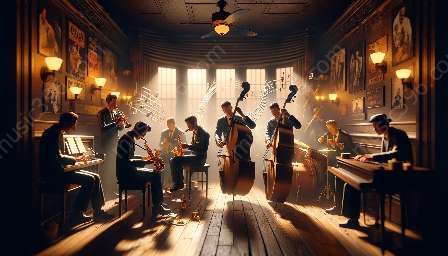Jazz is a genre of music that has its roots in the African-American communities of New Orleans. It is a uniquely American art form that encompasses a wide range of musical styles and elements. Over the years, jazz composition and arrangement have evolved through the influence of jazz history and blues, shaping the distinct characteristics of this genre.
The Key Elements of Jazz Composition and Arrangement
The key elements of jazz composition and arrangement include:
- Harmony: Jazz utilizes complex harmonies, often involving extended chords and chord substitutions, to create rich tonal textures.
- Rhythm: Syncopation, improvisation, and swing rhythms are fundamental to jazz, allowing for inventive and dynamic musical expressions.
- Melody: Jazz melodies are characterized by their expressive phrasing, ornamentation, and the use of blues scales, creating a distinct emotional impact.
- Form: Jazz compositions often feature non-traditional song structures, allowing for freedom and flexibility in performance.
- Arrangement: Jazz arrangements involve the organization and orchestration of musical elements, often allowing for variation and improvisation within a piece.
The Evolution of Jazz Composition and Arrangement
Jazz composition and arrangement have evolved significantly over the years, influenced by a variety of factors including jazz history and blues:
Jazz History:
The evolution of jazz composition and arrangement is closely tied to the historical development of jazz music. From its early roots in New Orleans and the emergence of ragtime and blues, jazz has continually absorbed and transformed musical elements from diverse cultural influences. The swing era of the 1930s and 1940s brought about a shift in jazz arrangement, as big bands and orchestras became prominent, influencing the complexity and orchestration of jazz compositions. The bebop movement of the 1940s saw a focus on intricate harmonies and improvisation, leading to a new era of jazz composition and arrangement that emphasized individual expression and technical proficiency.
Jazz & Blues:
Blues music has had a profound impact on the development of jazz composition and arrangement. The use of blues scales, expressive phrasing, and emotional depth in jazz melodies can be directly attributed to the influence of blues music. As jazz evolved, it incorporated elements of blues through the use of blue notes, call-and-response patterns, and the emotive storytelling characteristic of blues music.
The Influence of Jazz on Music
Through its evolution, jazz composition and arrangement have influenced a wide range of musical genres, showcasing the versatility and impact of this art form. Elements of jazz can be heard in modern pop, rock, R&B, and hip-hop, demonstrating the enduring influence of jazz on contemporary music.






























